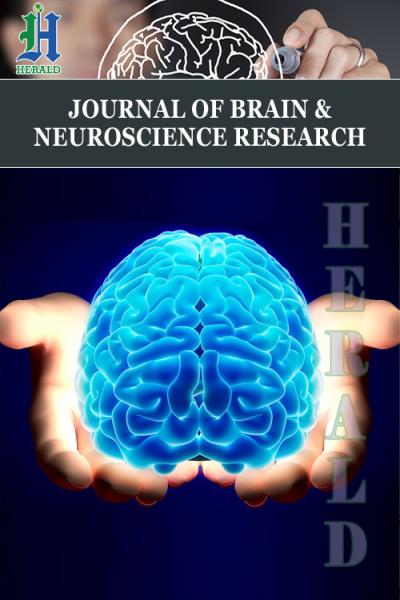
Nursing Assistance to Patient with Cerebral Hemorrhage
*Corresponding Author(s):
Ana Juana TambascoDepartment Of Neurosurgery, Registered Nurse, S. Luca Hospital, Vallo Della Lucania, Italy
Tel:+39 3387433496,
Email: adt2005@tiscali.it
Abstract
Background: About 25% of strokes for elderly patients are due to acute cerebral hemorrhage. Consequently, treatments to improve prognosis should be identified.
Methods: We retrospectively analyzed the type of nursing assistance given to patients with cerebral hemorrhage admitted to us from 2016 to 2018.
Results: We tried to identify are commended clinical nursing pathway for patients with acute cerebral hemorrhage, improving the clinical effects and nursing satisfaction and reducing adverse reactions.
Conclusions: There is significant learner concern regarding education within the cerebral hemorrhage patients. Although there are educational guidelines and focused neurocritical care educational materials, these alone do not satisfy educational needs. This study demonstrates the need for educational changes, but it does not assess best strategies or curricular content.
Keywords
Acute cerebral hemorrhage; Cerebral hemorrhage; Clinical nursing pathway
INTRODUCTION
NURSING PATHWAY
State of consciousness
• Monitor pupils frequently (diameter and reactivity to light stimulus)
• In case of psychomotor agitation, reassure the patient and inform the doctor
Breathing
• In case of respiratory depression, position the Guedel cannula, ventilate the patient with a mask and assist the resuscitator in endotracheal intubation maneuvers, if the respiratory autonomy fails
Cardiac activity
• Position a venous catheter allowing solution infusion and intravenous therapy. The correct dressing of the catheter insertion area will prevent infections
• Alteration of the hydroelectrolyte balance
• Guarantee the patient’s hydration via enteral or parenteral
• Keep a daily hydroelectrolyte balance, taking care to monitor hourly diuresis and detect any episodes of polyuria or oliguria
Hygiene
• Replace the bed linen avoiding sudden movements or rapid changes in position
• Take careful cleaning of the oral cavity even several times a day
Mobilization
• Assume correct postures with particular attention to any plegic limbs; the decubitus should be alternated with frequency and the permanence on the hemiplegic side must be shorter than that on the healthy side
• Use anti-bedsores (water, air mattresses, donuts, pillows)
• Passively mobilize the patient
Vomiting
• Position the patient in lateral decubitus
• Export any foreign bodies from the oropharynx and aspirate the secretions
• Position a nasogastric tube if the patient is not autonomous
Nutrition
• Administer anticonvulsant drugs, according to the prescription
• Evaluate the airway patency and monitor the parameters
• Be ready to transfer the patient to intensive care, where necessary
CONCLUSIONS
Patients with subarachnoid or cerebral hemorrhage are generally considered extremely “delicate” subjects. For such patients, after the acute phase, bed rest is imperative and all the stimuli that can provoke a pressure increase- both psychic (emotions) and physical (noises, trauma in the movements, enema dosage and energetic purgatives, protracted aspirations of tracheal secretions with stimulation of the reflex to cough)- are avoided.
The post-operative course of the patient provides a close control of the level of consciousness, the presence of headache or neck stiffness and the possible emergence of post-intervention neurological deficits. Intensive control of the blood pressure values is necessary to avoid ischemic complications due to vasospasm. We must not forget the possibility of the emergence of obstructive hydrocephalus. In addition, patients treated with endovascular procedure are often kept on anticoagulate with heparin for one week and on antiplatelet therapy for three months: they therefore require frequent coagulation checks, especially in the first postoperative week. Guidelines specific to neurocritical care disease states are available from the American Heart Association (AHA), NCS, American Academy of Neurology (AAN) and Congressof Neurological Surgeons, among others [7-10].
REFERENCES
- Manning LS, Robinson TG (2015) New insights into blood pressure control for intracerebral hemorrhage. Front Neurol Neurosci 37: 35-50.
- Sato S, Carcel C, Anderson CS (2015) Blood pressure management after intracerebral hemorrhage. Curr Treat Options Neurol 17: 49.
- Yousef KM, Balzer JR, Bender CM, Hoffman LA, Poloyac SM, et al. (2015) Cerebral perfusion pressure and delayed cerebral ischemia after aneurysmal subarachnoid hemorrhage. Am J Crit Care 24: e65-71.
- Christensen MC, Mayer S, Ferran JM (2009) Quality of life after intracerebral hemorrhage: results of the Factor Seven for Acute Hemorrhagic Stroke (FAST) trial. Stroke 40: 1677-1682.
- Moheet AM, Livesay SL, Abdelhak T, Bleck TP, Human T, et al. (2018) Standards for Neurologic Critical Care Units: A Statement for Healthcare Professionals from The Neurocritical Care Society. Neurocrit Care 29: 145-160.
- Presciutti M (2006) Nursing priorities in caring for patients with intracerebral hemorrhage. J Neurosci Nurs 38: 296-299, 315.
- 7. The Evolving Role of the Critical Care Dietitian. Society of Critical Care Medicine (2011).
- Luck L, Wilkes L, O'Baugh J (2015) Treading the clinical pathway A qualitative study of advanced practice nurses in a local health district in Australia. BMC Nurs 14: 52.
- Han KT, Kim SJ, Jang SI, Kim SJ, Lee SY, et al. (2015) Positive correlation between care given by specialists and registered nurses and improved outcomes for stroke patients. J Neurol Sci 353: 137-142.
- Pierce LL, Steiner V, de Dios AM, Vollmer M, Govoni AL, et al. (2015) Qualitative analysis of a nurse’s responses to stroke caregivers on a web-basedsupportive intervention. Top Stroke Rehabil 22: 152-159.
Citation: Tambasco AJ (2019) Nursing Assistance to Patient with Cerebral Hemorrhage. J Brain Neursci 2: 006.
Copyright: © 2019 Ana Juana Tambasco, et al. This is an open-access article distributed under the terms of the Creative Commons Attribution License, which permits unrestricted use, distribution, and reproduction in any medium, provided the original author and source are credited.

